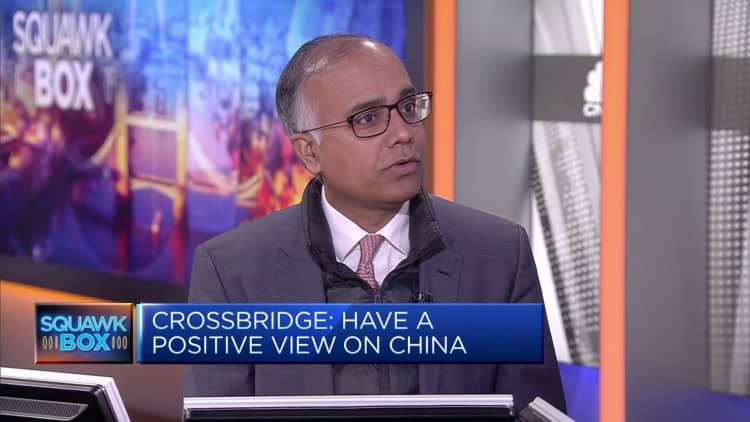Consumers eating shabu shabu at a restaurant in Lianyungang City, East China’s Jiangsu Province, Nov 26, 2023.
Future Publishing | Future Publishing | Getty Images
BEIJING — China’s consumer isn’t going to be spending big anytime soon, which means companies need to be more strategic to tap what’s still a massive market, according to McKinsey.
“I’m hopeful we will see an incremental improvement over the next year,” said Daniel Zipser, leader of McKinsey’s Asia consumer and retail practice.
“But there are no signs it should be a strong, V-shaped recovery,” said Zipser, who is also a senior partner at McKinsey and author of a new report called “China Consumption: Start of a New Era.”
China’s retail sales have generally remained lackluster since the onset of the Covid-19 pandemic in early 2020. Despite the end of Covid controls at the end of last year, falling global demand for Chinese goods and a slump in the real estate market have weighed on the country’s overall economy.
Looking ahead, growth is expected to slow. The government is tackling long-standing issues in the real estate sector, while tensions with major trade partners such as the U.S. have risen.
The overall economic recovery and the recovery of the property market has not been what people hoped for.
Daniel Zipser
senior partner, McKinsey
All that has kept Chinese consumer sentiment at the same level it was about 12 months ago, when the country was still living under Covid restrictions, Zipser pointed out in a phone interview Thursday.
“The overall economic recovery and the recovery of the property market has not been what people hoped for,” he said. “People are aware of the geopolitical tensions, very aware of … exports declining.”
“They don’t yet have the confidence this will be different [in] 2024, 2025.”
Clear winners and losers
Despite the overall gloom, there’s a divergence in how Chinese consumer companies are affected.
“I think in the old days, you could invest in whatever you want[ed], everything will grow, most companies have been doing well,” Zipser said. “Those days are over.”

Today, the market is more competitive, he said, pointing out that the product is much more important and the “consumer is much more sophisticated.”
Those tastes have changed swiftly with the country’s economic boom of past decades, creating a lucrative market for American corporations such as Apple and Starbucks.
Between 2012 and 2022, China’s per capita GDP more than doubled to $12,720, according to the World Bank. U.S. GDP per capita rose by about 47% during those 10 years to $76,398 in 2022, the data showed.
China’s massive size means that even if the economy slows from a high pace of growth to around 4% or 5% a year, the country’s incremental increase in retail sales will be the same as the combined total retail sales of South Korea, India and Indonesia, Zipser said.
Slower growth is still growth. China’s retail sales rose by 7.6% in October from a year ago, beating analysts’ expectations.
Major e-commerce companies reported third-quarter revenue growth. While growth for most companies was modest, bargain-focused Pinduoduo saw revenue nearly double from a lower base.
What people are buying
Consumers in China are spending more on services, rather than goods, Zipser said.
“We see particularly the restaurant companies doing well,” he said, noting related categories such as alcohol are also getting a boost.
He said he expects people in China will travel more internationally as it gets easier to apply to visas and the cost of flights comes down.
The McKinsey report found that international travel is only about half of where it was prior to the pandemic.
Zipser added that in contrast to the rise of value brands in more mature markets, premium brands are generally doing well in China.
He said that’s because when consumers in China are “trading down,” instead of buying a cheaper brand, they are actually finding discounted ways to buy the same product, spending less overall or purchasing a smaller package size.
Companies that adapt to new consumer trends also do well.
During the latest Singles Day shopping festival that ended Nov. 11, traditional e-commerce channels saw gross merchandise volume — an industry metric of sales over time — fall by 1% from last year, McKinsey found.
In contrast, livestreaming saw GMV climb by 19% during that time, the report said.
 EU News Digest Latest News & Updates
EU News Digest Latest News & Updates



